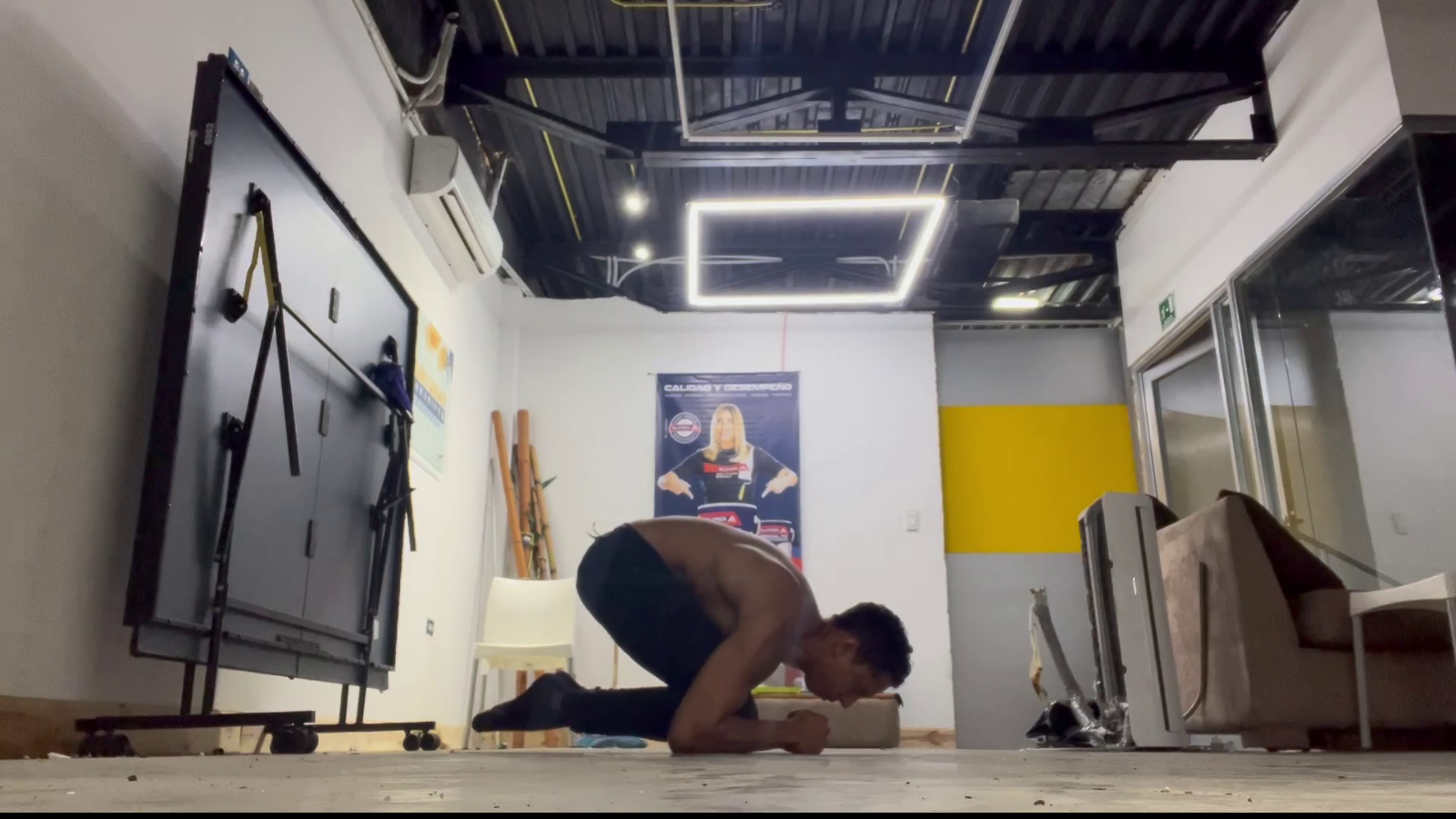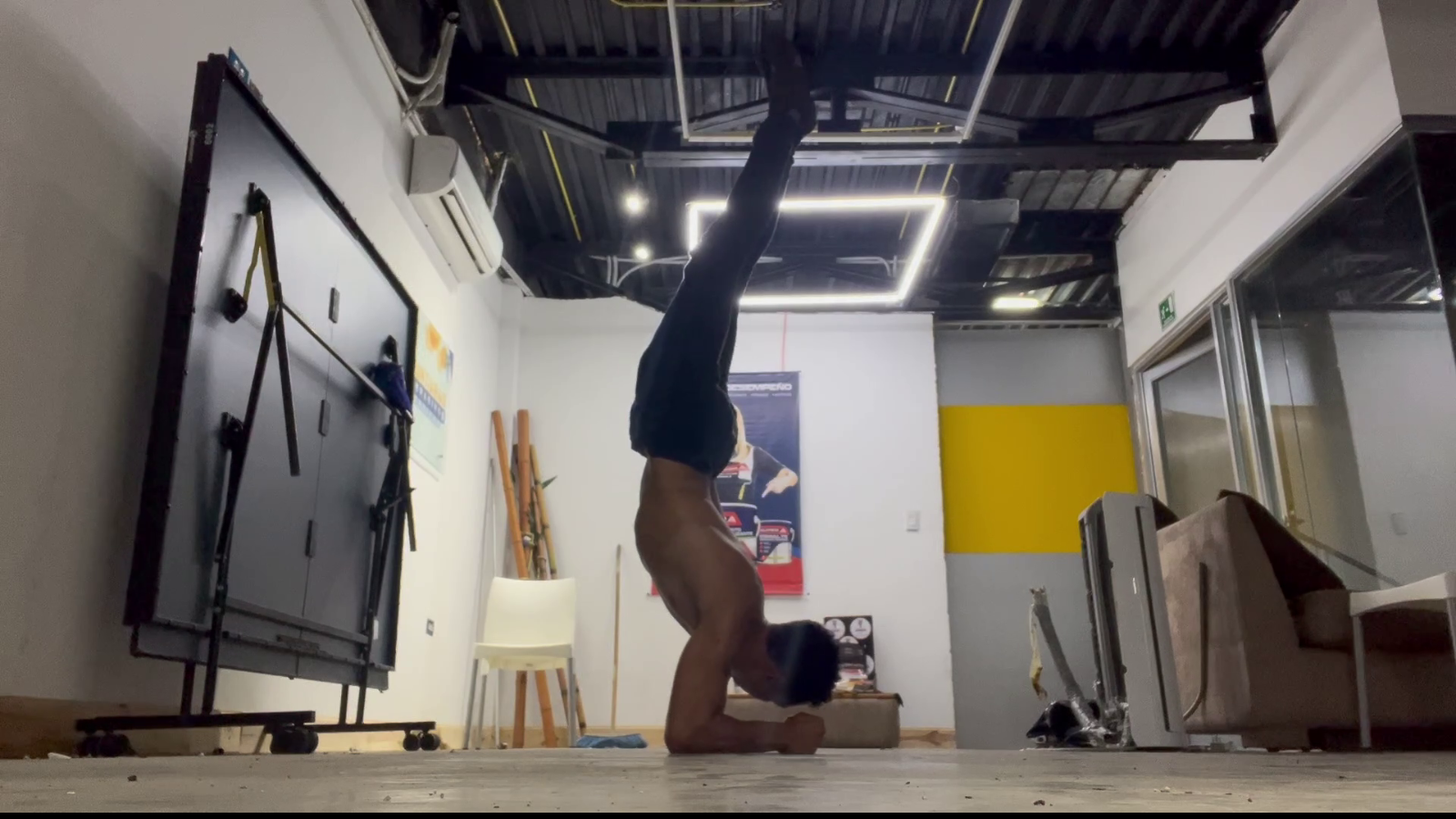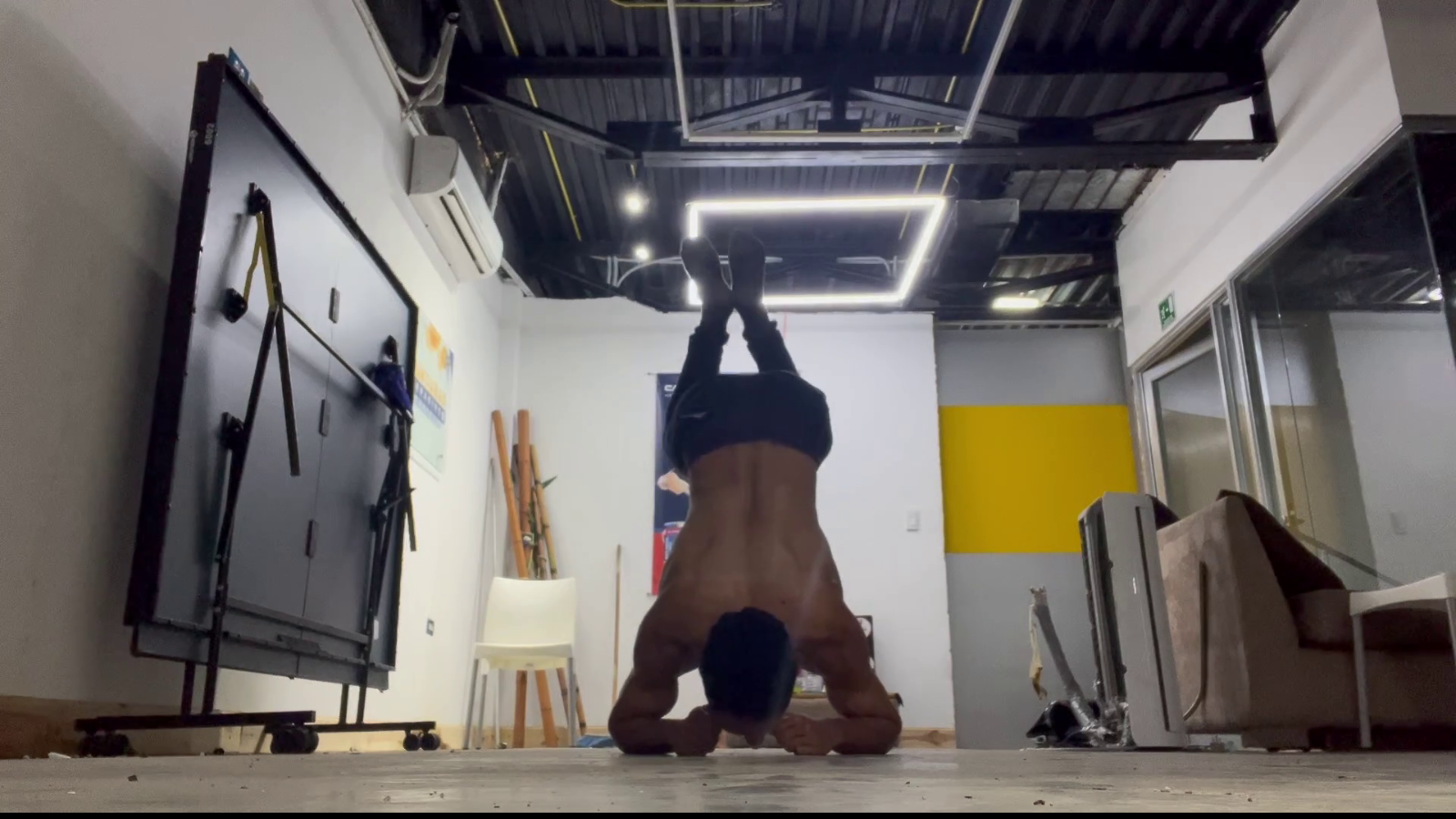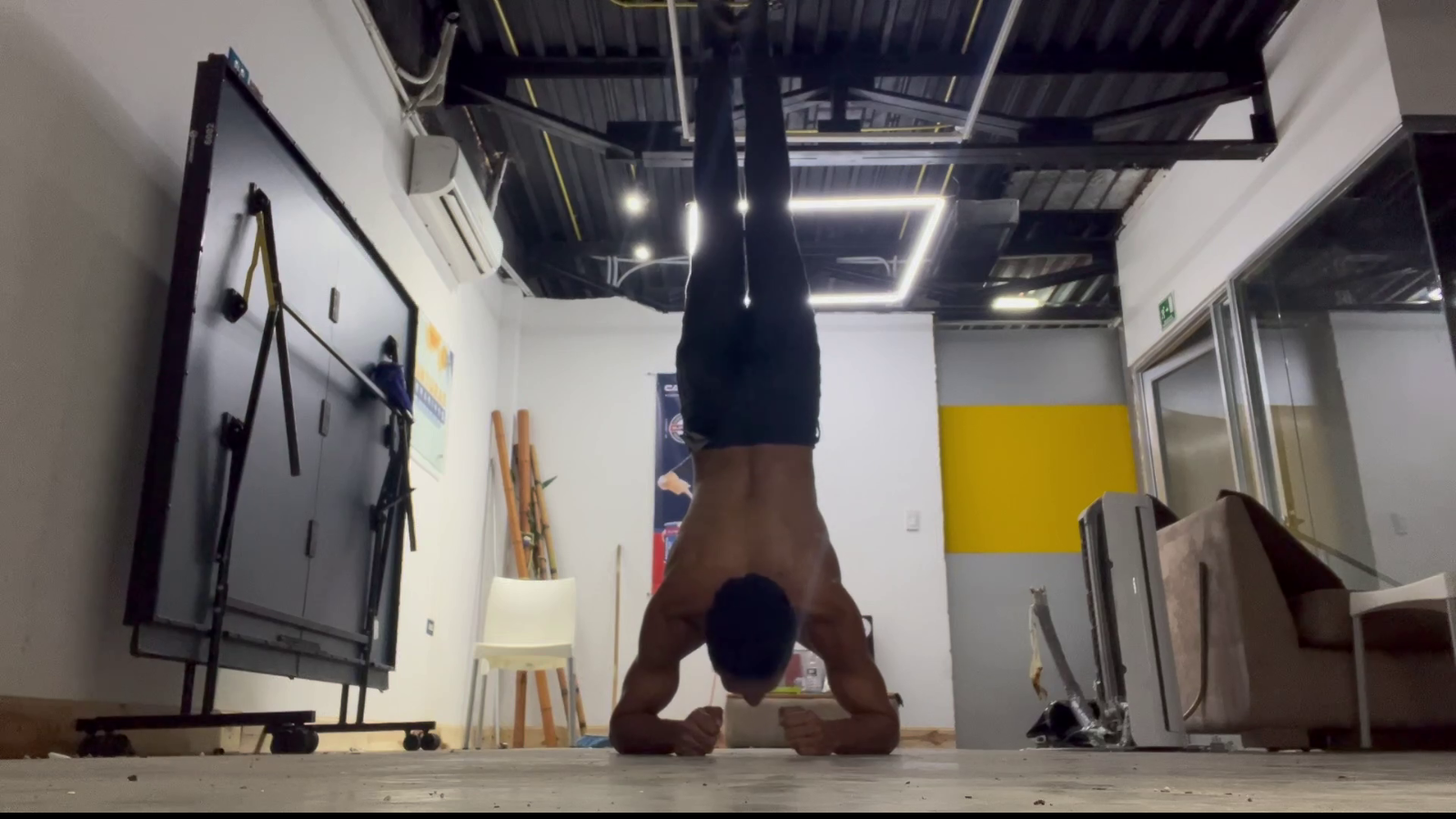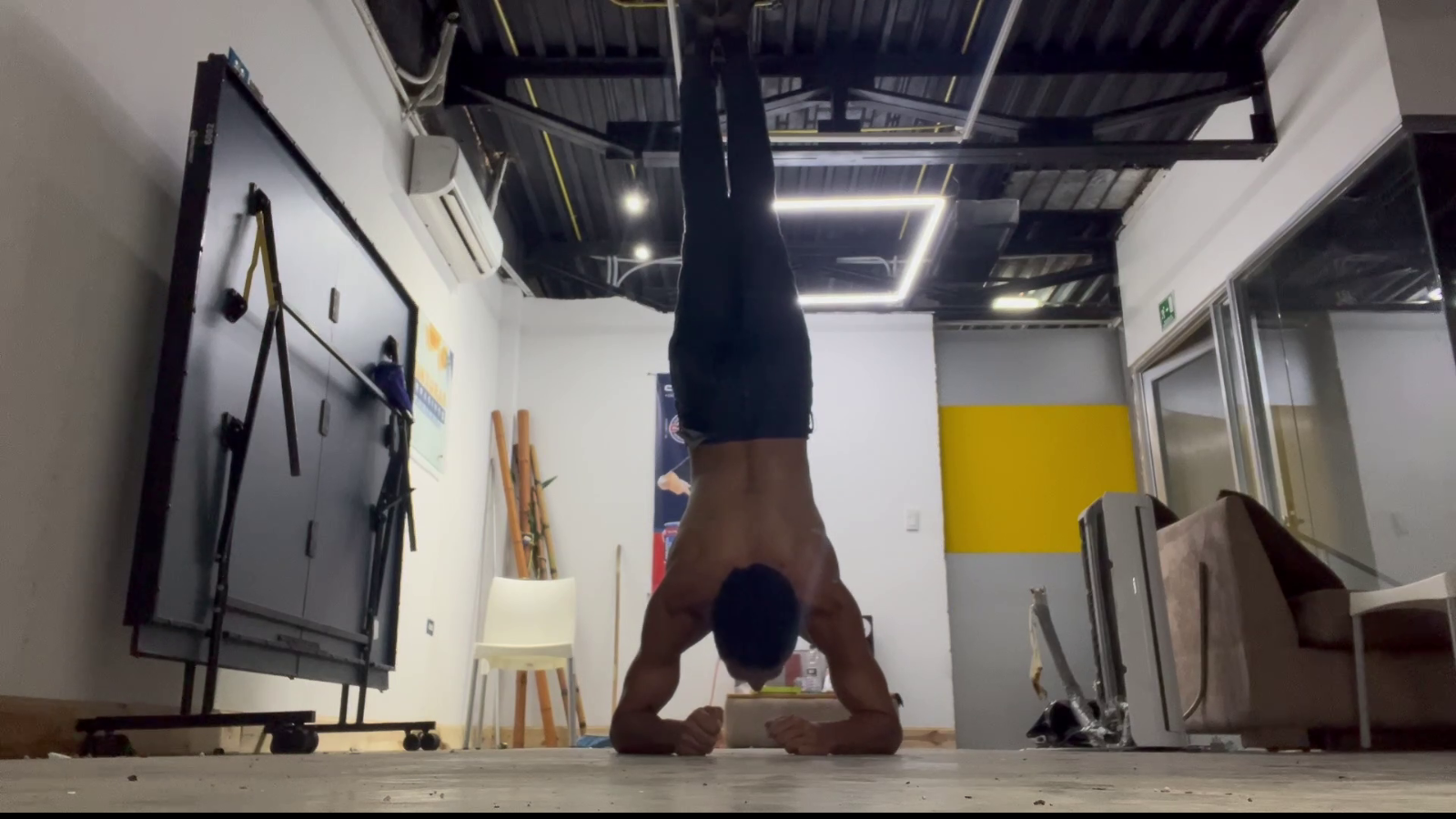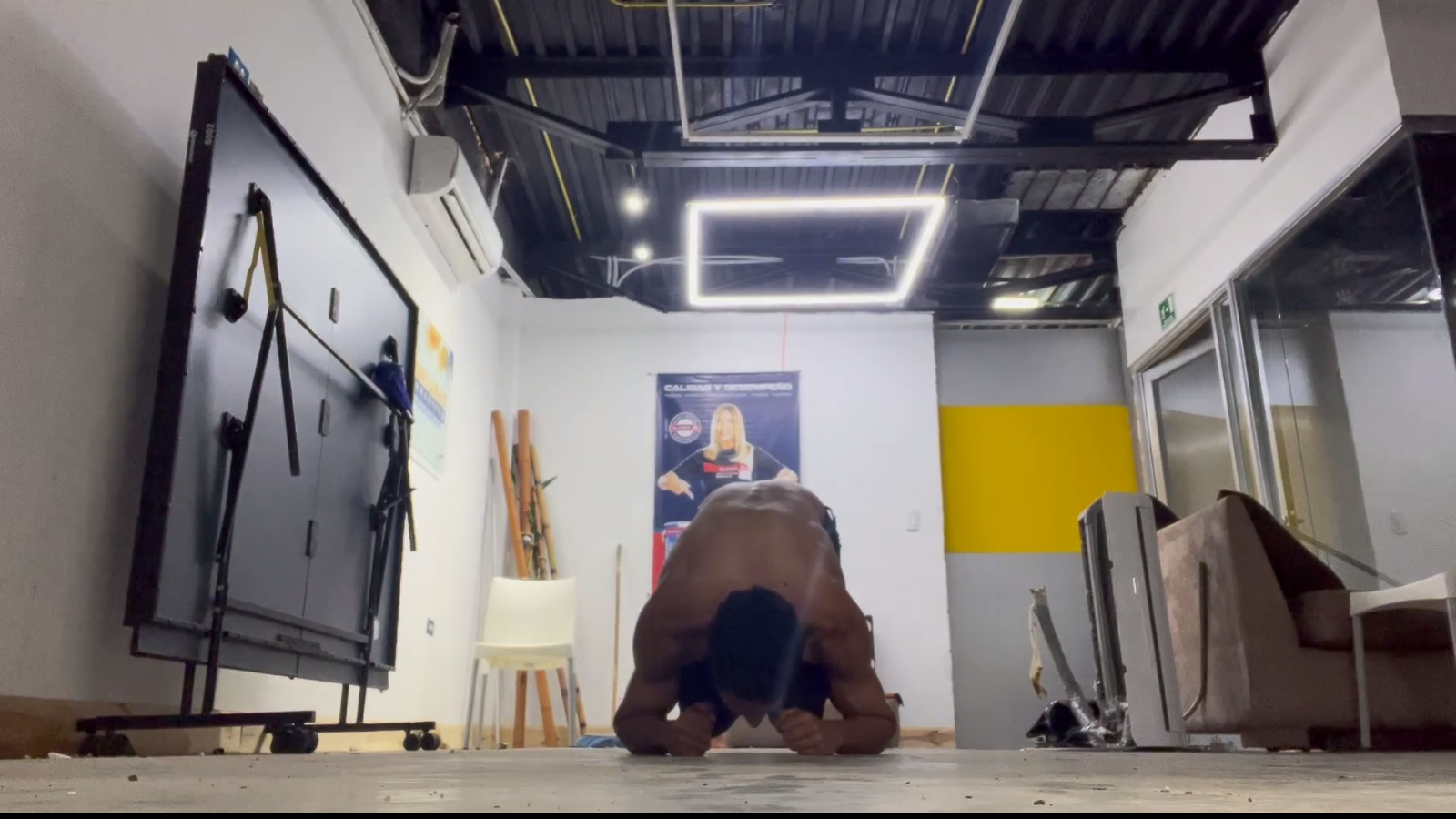| |
|---|

La tuck planche tradicional requiere apoyar el peso del cuerpo sobre las muñecas, lo cual puede resultar doloroso o incluso imposible para quienes tenemos alguna lesión en esa zona. Por eso, he desarrollado una adaptación de este ejercicio que permite fortalecer el core y los brazos sin cargar las muñecas tambien se puede hacer press en esta tuck planche.
Tuck planche sin cargar las muñecas: una alternativa segura y efectiva
Para realizar esta variante, necesitarás:
- Una superficie estable: Puede ser el suelo.
- Los antebrazos también puede hacerse con uno solo pero solo lo e visto haciéndolo un vecino yo no puedo: En lugar de apoyar las manos, apoyarás los antebrazos desde el codo hasta la palma.
Pasos a seguir: - Posición inicial: Colócate frente a la superficie elegida y apoya los antebrazos, asegurándote de que los codos estén directamente debajo de los hombros y formen un ángulo de 90 grados.
- Elevación: Contrae los músculos del core y levanta las piernas hacia el pecho, formando una posición fetal. Los pies deben estar juntos y apuntando hacia el techo.
- Mantención: Mantén la posición el mayor tiempo posible, concentrándote en mantener el cuerpo rígido y alineado.
Consejos adicionales: - Fortalece el core: Un core fuerte es esencial para realizar cualquier tipo de planche. Incorpora ejercicios como planchas leg a tu rutina.
- Trabaja la movilidad de los hombros: Una buena movilidad en los hombros te permitirá realizar el movimiento de manera más eficiente y reducir el riesgo de lesiones.
- Progresión gradual: Si eres principiante, comienza apoyando los pies en el suelo y levanta gradualmente las piernas hasta alcanzar la posición de tuck planche.
Beneficios de esta variante: - Reduce la presión sobre las muñecas: Ideal para personas con lesiones en las muñecas o quienes desean proteger esta articulación.
- Fortalece el core, los hombros y los brazos: Al igual que la tuck planche tradicional, esta variante ayuda a desarrollar fuerza en todo el cuerpo superior.
- Mejora la estabilidad y el equilibrio: Mantener una posición estática durante la tuck planche requiere una gran cantidad de equilibrio y control corporal.
Conclusión:
Esta adaptación de la tuck planche ofrece una alternativa segura y efectiva para aquellos que desean fortalecer su cuerpo y mejorar su rendimiento físico, sin poner en riesgo sus muñecas. Incluso si tienes una lesión, como en mi caso, puedes seguir progresando y desafiándote a ti mismo.
¿Qué te parece esta variante? ¿Te animas a probarla?
The traditional tuck planche requires weight bearing on the wrists, which can be painful or even impossible for those of us with wrist injuries. Therefore, I have developed an adaptation of this exercise that allows you to strengthen your core and arms without loading your wrists. You can also press on this tuck planche.
Tuck planche without loading the wrists: a safe and effective alternative
To perform this variation, you will need:
- A stable surface: this can be the floor.
- The forearms can also be done with just one but I've only seen it done by a neighbour I can't: Instead of supporting your hands, you'll support your forearms from elbow to palm.
Steps to follow: - Starting position: Stand in front of your chosen surface and rest your forearms, making sure that your elbows are directly under your shoulders and form a 90 degree angle.
- Lift: Contract your core muscles and lift your legs towards your chest, forming a fetal position. Feet should be together and pointing towards the ceiling.
- Hold: Hold the position as long as possible, concentrating on keeping the body rigid and aligned.
Additional tips: - Strengthen your core: A strong core is essential for performing any type of planche. Incorporate exercises such as leg planks into your routine.
- Work on shoulder mobility: Good shoulder mobility will allow you to perform the movement more efficiently and reduce the risk of injury.
- Gradual progression: If you're a beginner, start with your feet flat on the floor and gradually raise your legs until you reach the tuck planche position.
Benefits of this variation: - Reduces pressure on the wrists: Ideal for people with wrist injuries or those who want to protect the wrist joint.
- Strengthens core, shoulders and arms: Like the traditional tuck planche, this variation helps develop strength throughout the upper body.
- Improves stability and balance: Maintaining a static position during the tuck planche requires a great deal of balance and body control.
Conclusion:
This adaptation of the tuck planche offers a safe and effective alternative for those who want to strengthen their body and improve their physical performance, without putting their wrists at risk. Even if you have an injury, as in my case, you can still progress and challenge yourself.
What do you think of this variant, and would you like to give it a try?
